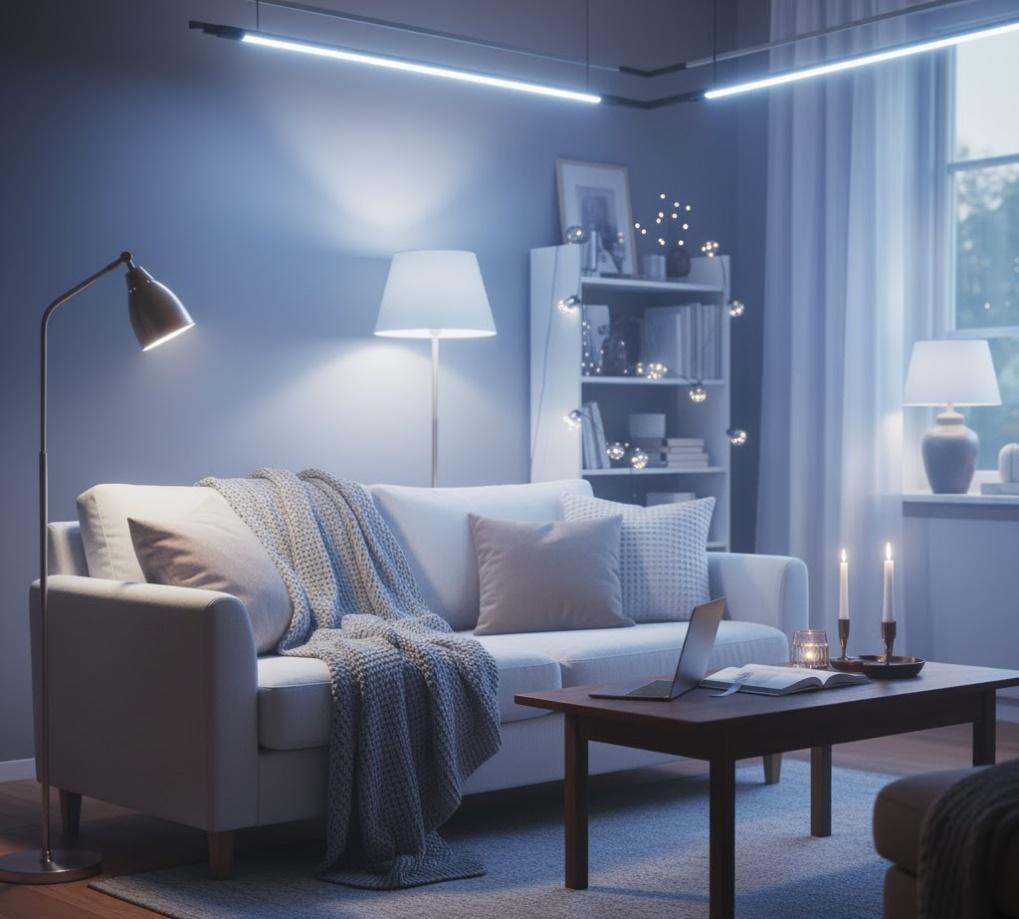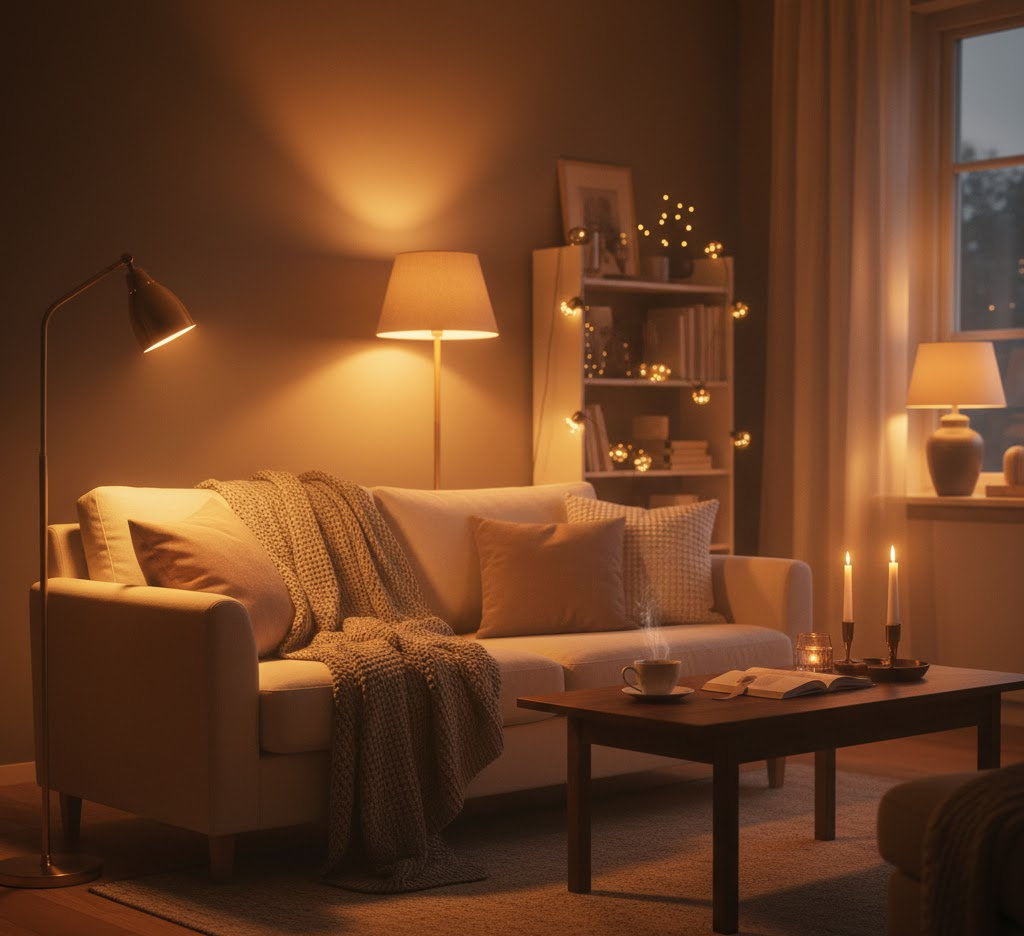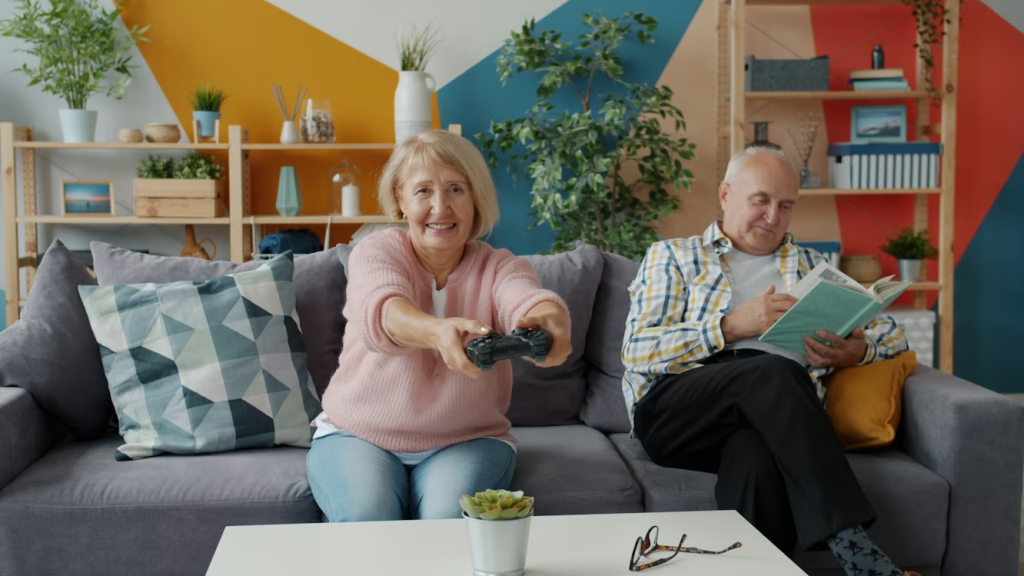Before a home hits the market, real estate agents look at more than fresh paint and clean floors. They pay close attention to lighting, especially the color of the light. The right balance of warm vs cool light can make rooms feel larger, cleaner, and more inviting, both in listing photos and during showings.
This guide explains how light color works, how agents think about home staging lighting, and which simple lighting changes can support your sale without a full remodel.
Why Light Color Matters In Home Staging
Light color is usually described with the Kelvin (K) scale:
- Warm light: Around 2200 K to 3000 K, similar to traditional incandescent bulbs or candlelight.
- Neutral light: Around 3000 K to 3500 K, a balance between warm and cool.
- Cool light: Around 4000 K to 5000 K, closer to daylight with a crisp, white tone.
In photos, warm light can make a room feel cozy but sometimes a bit yellow. Very cool light can make surfaces look sharp but also harsh or sterile. Agents aim for a look that suggests clean, bright, and comfortable spaces, so they rarely use extreme ends of the scale when staging a home.
Warm vs Cool Light: Simple Rules Agents Follow
There is no single “correct” color temperature for every home, but many real estate pros use a few simple rules when giving lighting advice.
Rule 1: Warm light for relaxing spaces
In living rooms and bedrooms, agents usually prefer warm or soft white bulbs around 2700 K to 3000 K. This tone flatters skin, softens shadows, and pairs well with wood floors and fabrics. It helps buyers imagine a comfortable evening at home instead of a cold, bright showroom.
Rule 2: Neutral light for kitchens and dining areas
For kitchens and dining spaces, many staging plans use neutral white around 3000 K to 3500 K. This range keeps counters, tile, and appliances looking clean while still avoiding a bluish cast. Food also looks more appealing under neutral light compared to very cool or very yellow tones.
Rule 3: Clean, crisp light for bathrooms and work areas
Bathrooms and small home offices often benefit from slightly cooler light, around 3500 K to 4000 K. This gives mirrors and tile a bright, fresh look. Agents still avoid the harsh, icy look of very blue bulbs above 5000 K, which can make skin tones look tired in listing photos.
Room-By-Room Lighting Tips Before You List

Instead of changing every fixture, focus on key rooms that appear in the first photos of your listing.
Living room and family room
- Use warm bulbs (around 2700 K to 3000 K) in ceiling fixtures and lamps.
- Layer light with at least one floor or table lamp, not just overhead light.
- Avoid mismatched bulbs that create patches of different colors in one view.
Kitchen and kitchen island
- Use neutral bulbs (around 3000 K to 3500 K) in pendants and recessed lights.
- Check that under-cabinet lighting is the same color family as the ceiling lights.
- Replace any dim or flickering bulbs so counters look bright and ready for cooking.
Bathrooms
- Choose bulbs around 3500 K to 4000 K for mirror lighting, which helps with a clean, spa-like feel.
- Make sure fixtures above the mirror and any ceiling light are the same color temperature.
- Check for shadows on faces; if they are too strong, add softer side light where possible.
Entryway and hallway
- Use warm to neutral light (around 2700 K to 3200 K) to keep the welcome area inviting.
- Ensure the color matches nearby rooms so the view from the front door feels consistent.
- Increase brightness slightly in narrow halls to help them feel more open.
Common Lighting Mistakes That Hurt Listings
Many homes have good layouts but lose impact because of a few easy-to-fix lighting issues.
- Mixed color temperatures: Warm lamps, cool ceiling lights, and daylight bulbs all in one room. This can look chaotic in photos.
- Lighting that is too dim: Agents often walk into homes where blinds are closed and only one small lamp is on. Buyers then describe the home as dark or “tired,” even if the finishes are nice.
- Very blue daylight bulbs at night: These can feel like office lighting and make paint colors appear off.
- Exposed harsh bulbs: Unshaded bulbs with strong glare can be uncomfortable during showings and draw attention away from the room itself.
Quick Checklist Before Photos And Showings
Real estate agents want a home to look consistent from room to room. Use this checklist as a final lighting scan:
- Pick one main color temperature for each zone of the home and match bulbs within that zone.
- Replace burnt-out bulbs and upgrade very dim bulbs with slightly higher lumen options.
- Clean glass shades and fixtures so they do not mute the light with dust or foggy residue.
- Turn on all key lights for listing photos: foyer, kitchen, living room, dining area, and primary bedroom.
- Open blinds and curtains to combine natural light with your chosen warm or cool light.
- Walk through your home as a buyer would and note any space that still feels gloomy or uneven.
Should You Change Fixtures Or Just Bulbs?
For many sellers, switching to the right warm vs cool light bulbs is enough to improve the look of a home. However, outdated or very small fixtures can still hold a room back, even with better bulbs.
Real estate agents often suggest upgrading a few high-impact fixtures such as the foyer light, kitchen island pendants, or the main dining room chandelier. These changes stand out in photos and help the home feel more current compared to similar listings.
Ready To Upgrade Your Lighting Before Listing?
Thoughtful home staging lighting does not have to be complicated. By choosing the right balance of warm vs cool light and fixing a few common issues, you support both the photography and the in-person experience for potential buyers.
If you are considering updated fixtures along with new bulbs, you can visit Seus Lighting for ideas on modern chandeliers, pendants, and other pieces that suit staged homes and everyday living. A few smart changes to your lighting plan can help your property feel ready for the market from the first showing onward.



















